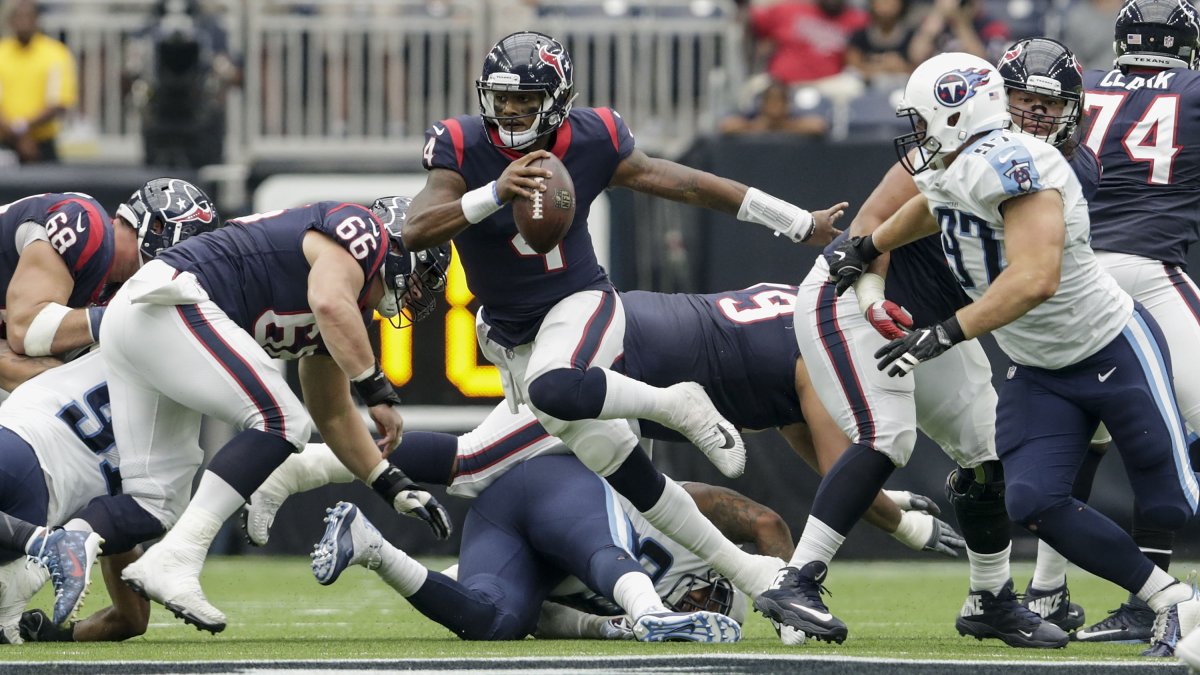I’ve written ad nauseum about the effects a mobile quarterback can have on a team’s rushing attack when utilized properly. They are an absolute nightmare for opposing defensive coordinators to gameplan for. That’s why I shed a tear every time I see a coach try to turn a dual-threat quarterback into a pocket passer. It’s like buying a Ferrari and never actually taking it on the highway.
Early in the season, I feared that Houston Texans head coach Bill O’Brien had done just that with first round pick Deshaun Watson. On 30 designed runs in Watson’s first career start against the Bengals, the Texans only employed three option runs. On 35 dropbacks, they only had five utilized play action (all from under center). The result was 10 measly points via a turnover and a 49-yard scramble touchdown.
To my delight, and that of Texans fans, the offense has been completely overhauled since then with the throttle opened wide. The Texans dropped 33 on the Patriots before exploding for a franchise record 57 points this past week against the Titans in one of the most surprising results of the weekend. Let’s take a look at what exactly changed.
As I mentioned earlier, Watson only had five play action passes against the Bengals. The past two weeks he’s had 27 combined (most in the NFL over that span). Play action not only provides extra time with the defensive line having to play run first, it also can influence linebackers and safeties when utilized correctly. You see that below:
Still feel like it's terribly underutilized league-wide. Look what it does to safety Kevin Byard here. 8 yards off the ball and still biting pic.twitter.com/1u4SG1I2iX
— Mike Renner (@PFF_Mike) October 5, 2017
The fake gets safety Kevin Byard to bite and what should be a route that is bracketed, is all of a sudden wide open. On Watson’s 10 play action passes against the Titans, he was 6-of-10 for 119 yards and two touchdowns for a passer rating of 141.3. His average time to throw on those plays was 3.4 seconds (2.7 seconds is NFL average for all passes) and he wasn’t sacked once.
While the play action did its job in providing big plays for the offense, it was how the Texans utilized their quarterback in the run game that was the lifeblood of the offense.
also loved how Texans have been getting Watson involved in run game. 3 simple IZ reads Week 2. 12 option plays this past week and 2 QB draws pic.twitter.com/8NxXXmrg8y
— Mike Renner (@PFF_Mike) October 5, 2017
Of their 41 called runs, 12 had option looks and two were designed quarterback draws. They averaged 5.1 yards per carry on those plays, and didn’t have a single one go for zero or negative yards. The latter is unbelievable. 20.2 percent of designed runs (not including sneaks, kneels, botched plays, etc.) leaguewide this season have gone for zero or negative yards. The chances of picking a random sample of 14 runs and having them all be positive is 4.4 percent.
That’s by far the biggest advantage of the option. This isn’t just random. The unblocked man can’t commit too deep into the backfield and allow the quarterback to leak out free. So, he sits at the line of scrimmage and even if he plays it perfectly, will still net the offense a couple yards. And those few yards are crucial for getting a young quarterback like Watson into manageable passing situations. Of the 19 first down or touchdown conversions Watson had through the air on Sunday, only seven (36.8 percent) were with 10 yards to go and none with more. Leaguewide the average is 44.9 percent.
With a running game giving him favorable down and distances, Watson was able to let his accuracy shine through and dominate the Titans defense.



 © 2024 PFF - all rights reserved.
© 2024 PFF - all rights reserved.